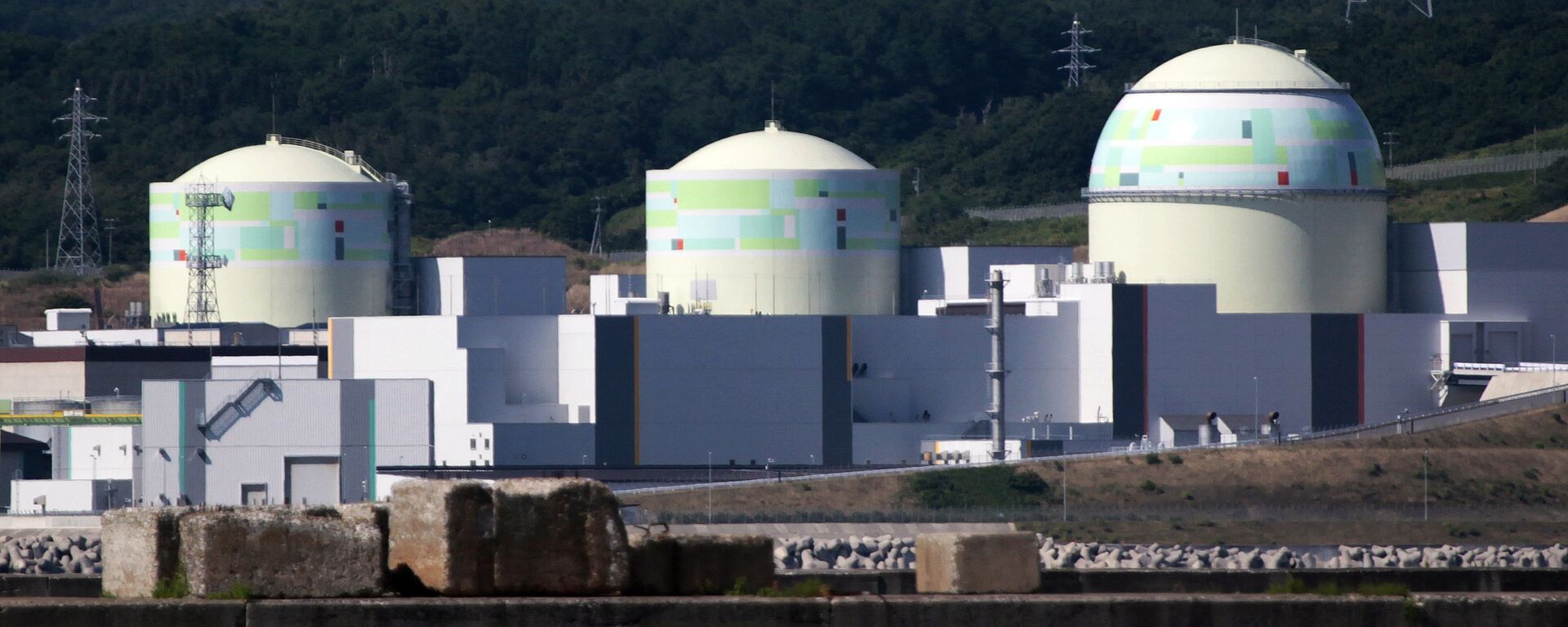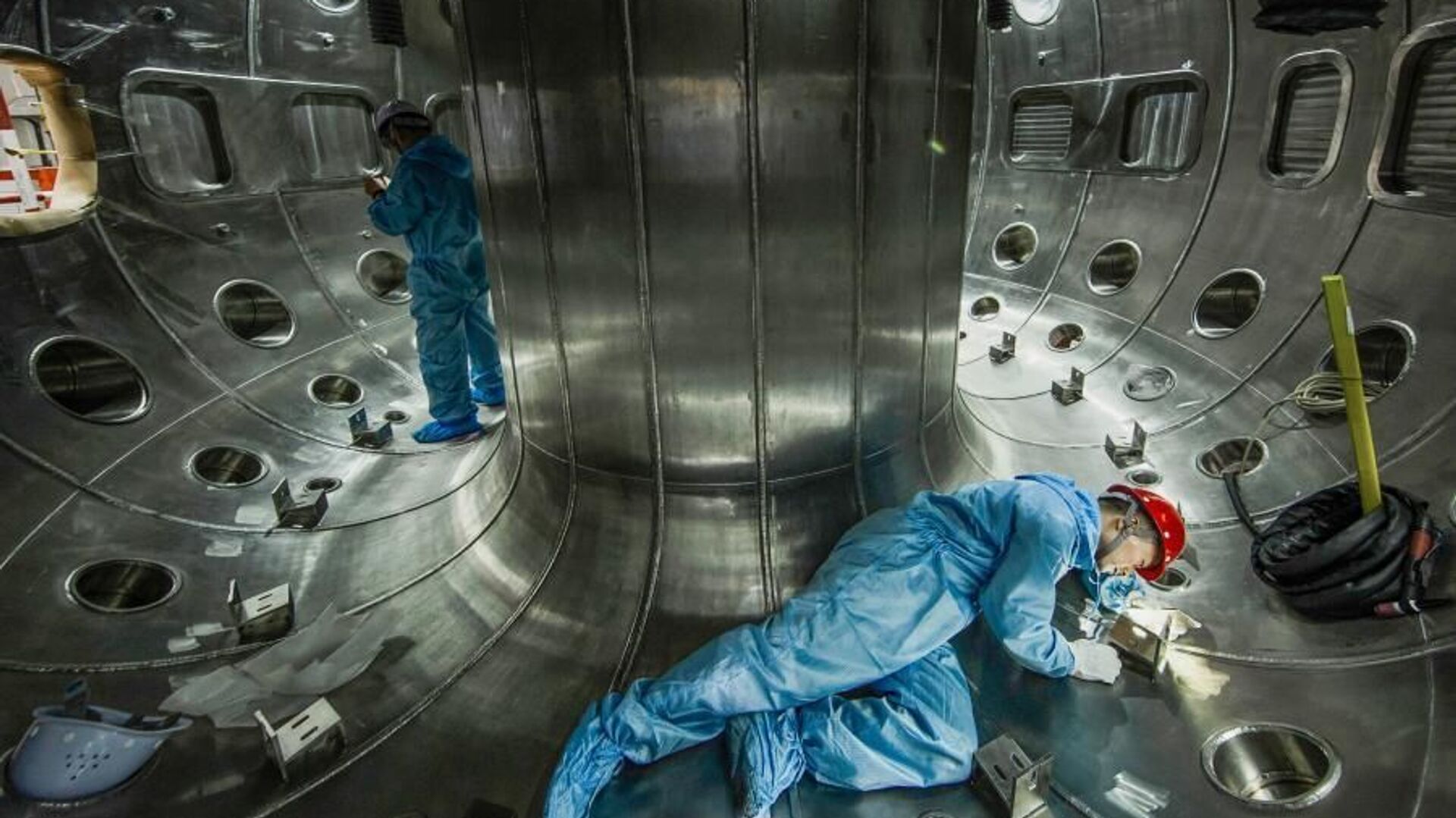https://sputnikglobe.com/20230111/chinese-scientists-report-new-mode-of-plasma-found-in-fusion-power-experiments-1106232248.html
Chinese Scientists Report New Mode of Plasma Found in Fusion Power Experiments
Chinese Scientists Report New Mode of Plasma Found in Fusion Power Experiments
Sputnik International
A group of Chinese scientists engaged in research into fusion power have discovered a new mode of plasma that could help stabilize fusion reactions, making it easier to generate the elusive form of clean electrical power.
2023-01-11T18:36+0000
2023-01-11T18:36+0000
2023-01-11T18:36+0000
science & tech
nuclear fusion
plasma
china
https://cdn1.img.sputnikglobe.com/img/07e4/0c/07/1081387197_0:47:900:553_1920x0_80_0_0_2cadeb496dd1caa8eeeae2f1969204c1.jpg
The scientists’ findings, described as “a big breakthrough in steady-state operation,” were detailed in an article published in the international journal Science Advances earlier this month.According to their report, they found a new “super-I mode” of plasma during a recent record-setting operation of the Experimental Advanced Superconducting Tokamak (EAST) in December 2021. The reactor is located in Hefei, China, and uses the torus-shaped Tokamak reactor design first invented in the Soviet Union.Fusion power plants aim to capture the immense energy created when two atoms fuse together under pressure - the same reaction that makes stars like the sun shine. However, here on Earth, scientists are trying to recreate those conditions using powerful magnets to control plasma, the nature of which is expressed in waves that have different modes.“There are all kinds of issues associated with very long pulse operation, and it’s very comforting for us at ITER to see that this has been achieved, even if it is on a much smaller device,” he added.Song Yuntao, a researcher at the Institute of Plasma Physics, Chinese Academy of Sciences in Hefei, China, and co-author of the study, explained that the discovery makes capturing useful energy in the reactor much easier.While there has been a great deal of international cooperation on fusion power, which has the potential to replace radioactive, fission-powered nuclear power plants, as well as other forms of electrical generation, there is also international competition, too. In December, American scientists working at the US government-funded Lawrence Livermore National Laboratory announced they had, for the first time, generated more energy using a fusion reaction than was put into it. However, the reaction was not sustained, and the overall energy consumed by the experiment far exceeded the reaction’s output.
https://sputnikglobe.com/20221213/experts-warn-of-lack-of-credible-plan-for-making-fusion-power-viable-in-wake-of-us-test-success-1105432854.html
https://sputnikglobe.com/20230110/japan-and-us-sign-agreement-on-joint-development-of-new-generation-nuclear-reactors-reports-suggest-1106187007.html
china
Sputnik International
feedback@sputniknews.com
+74956456601
MIA „Rosiya Segodnya“
2023
News
en_EN
Sputnik International
feedback@sputniknews.com
+74956456601
MIA „Rosiya Segodnya“
Sputnik International
feedback@sputniknews.com
+74956456601
MIA „Rosiya Segodnya“
china's artificial sun, fusion power experiments, chinese scientists, mode of plasma
china's artificial sun, fusion power experiments, chinese scientists, mode of plasma
Chinese Scientists Report New Mode of Plasma Found in Fusion Power Experiments
A group of Chinese scientists engaged in research into fusion power have discovered a new mode of plasma that could help stabilize fusion reactions, making it easier to generate the elusive form of clean electrical power.
The scientists’ findings, described as “a big breakthrough in steady-state operation,” were detailed in
an article published in the international journal Science Advances earlier this month.
According to their report, they found a new “super-I mode” of plasma during a recent record-setting operation of the Experimental Advanced Superconducting Tokamak (EAST) in December 2021. The reactor is located in Hefei, China, and uses the torus-shaped Tokamak reactor design first invented in the Soviet Union.
“These achievements contribute to the integration of fusion plasma technology and physics, which is essential to operate next-step devices,” the researchers noted in their report.
Fusion power plants aim to
capture the immense energy created when two atoms fuse together under pressure - the same reaction that makes stars like the sun shine. However, here on Earth, scientists are trying to recreate those conditions using powerful magnets to control plasma, the nature of which is expressed in waves that have different modes.

13 December 2022, 22:06 GMT
“The significance of the EAST experiments is that they have demonstrated, for the first time, that tokamak plasmas … can be sustained and controlled for very long pulses – more than 1,000 seconds, which is similar to the long pulses ITER aims for in the long term,” explained physicist Richard Pitts, the head of experiments and plasma operations at the International Thermonuclear Experimental Reactor (ITER) in France.
“There are all kinds of issues associated with very long pulse operation, and it’s very comforting for us at ITER to see that this has been achieved, even if it is on a much smaller device,” he added.
Song Yuntao, a researcher at the Institute of Plasma Physics, Chinese Academy of Sciences in Hefei, China, and co-author of the study, explained that the discovery makes capturing useful energy in the reactor much easier.

10 January 2023, 06:20 GMT
“If we compare nuclear fusion reactions to lightning bolts, our goal is to collect as many bolts as possible in a magnetic cage and export the energy for human use in a stable and sustaining way,” Song told Chinese media. “The new operating mode discovered on EAST enables us to collect more lightning bolts without damaging the magnetic cage, while maintaining steady-state operation for a long time.”
While there has been a great deal of international cooperation on fusion power, which has the potential to replace radioactive, fission-powered nuclear power plants, as well as other forms of electrical generation, there is also international competition, too. In December, American scientists working at the US government-funded Lawrence Livermore National Laboratory
announced they had, for the first time, generated more energy using a fusion reaction than was put into it. However, the reaction was not sustained, and the overall energy consumed by the experiment far exceeded the reaction’s output.





